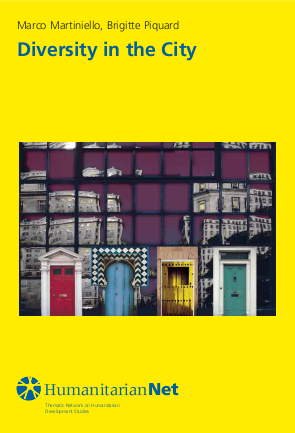
It seems the world is becoming increasingly uniform culturally. To a certain degree, this observation is correct in the sense that a global mass culture is certainly being disseminated and sold all over the planet. But the world is at the same time increasingly diversified in terms of ethno-cultural identities. The tension between the trend toward cultural uniformity and the trend toward differentiation of identities is well captured by observing the evolution of social dynamics in cities. Most medium-sized and large European cities are today increasingly fragmented socially, economically and ethnically. Some of them are even becoming socially, ethnically and racially ghettoised. But at the same time, European cities remain places where intergroup encounters can develop and where cultural production takes place. The cities are the crossroads between the local and the global. The first aim of this book is to discuss the changes affecting the city and the role played by cultural diversity and ethno-national identities in those changes. The second aim is to examine some crucial issues and aspects of the current process of cultural diversification of cities and its impact on urban socio-economic, political and cultural activities. In October 2000, we decided to bring together in Liège, Belgium, scholars from a large number of European universities to discuss issues linked to cultural and ethnic diversity at the city level in a multidisciplinary perspective. The aim was to form a relatively small group in a conducive atmosphere to brainstorm on the subject. Eleven papers were presented, each of them discussed by other scholars in order to feed the debate, to share approaches and views before opening the floor. Policy makers, politicians and representatives of the civil society also took part in the discussion.
Resource collections
- UN Habitat - Urban Response Collection
- Urban Response - Urban Crisis Preparedness and Risk Reduction
- Urban Response Collection - Community Engagement and Social Cohesion
- Urban Response Collection - Economic Recovery
- Urban Response Collection - Environment and Climate Change
- Urban Response Collection - Housing, Land and Property
- Urban Response Collection - Urban Crisis Response, Recovery and Reconstruction
- Urban Response Collection - Urban Resilience
